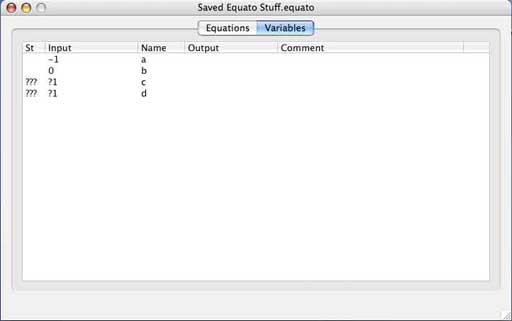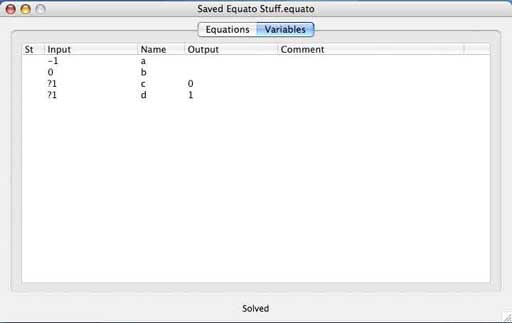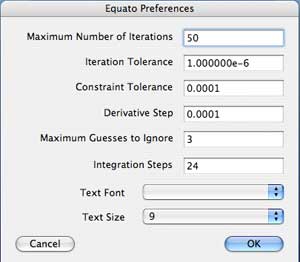Equations and Solutions
Equato works by constraint propagation. Each operator, for example, a plus operator, works several ways. If there is an equation a=b+c, and b and c are known, it will do the addition to find a. If a and c are known, it will subtract to find b. Some operators are irreversible. For example, if the divisor would be zero, Equato just ignores the constraint. Some operators, particularly the trigonometric functions are only partially reversible since there are a lot of values of x for which sin(x) = 0. Generally, Equato will pick one of the smaller values so that typical geometeric computations will reverse solve correctly.
If there is an error in the
equation there will be a cryptic, unreadable message in the status
column, otherwise that column will be either blank or contain an
indication that the equation cannot be balanced because the problem is
overdetermined. |
Integrals and Derivatives
integral(expr, vbl, a, b) - The definite integral function
has four arguments: an expression to integrate, an integration variable, a low bound and a high bound. It integrates using Simpson's method (see the Preferences below), and within the expression, any references to the integration variable are local.
derivative(expr, vbl, a) - The definite derivative function has three arguments: an expression to compute the derivative of, the variable with respect to which the derivative is to be computed, and a value for that variable at which the derivative is to be computed. The derivative is computed iteratively by decreasing the interval of approximation.
Neither of these functions backsolves. They are only computed forwards, but the Newton-Raphson iterative solver can be used to solve for integral bounds or derivative values. For example, solving for the zero of a derivative function can be used to find maxima or minima. |






